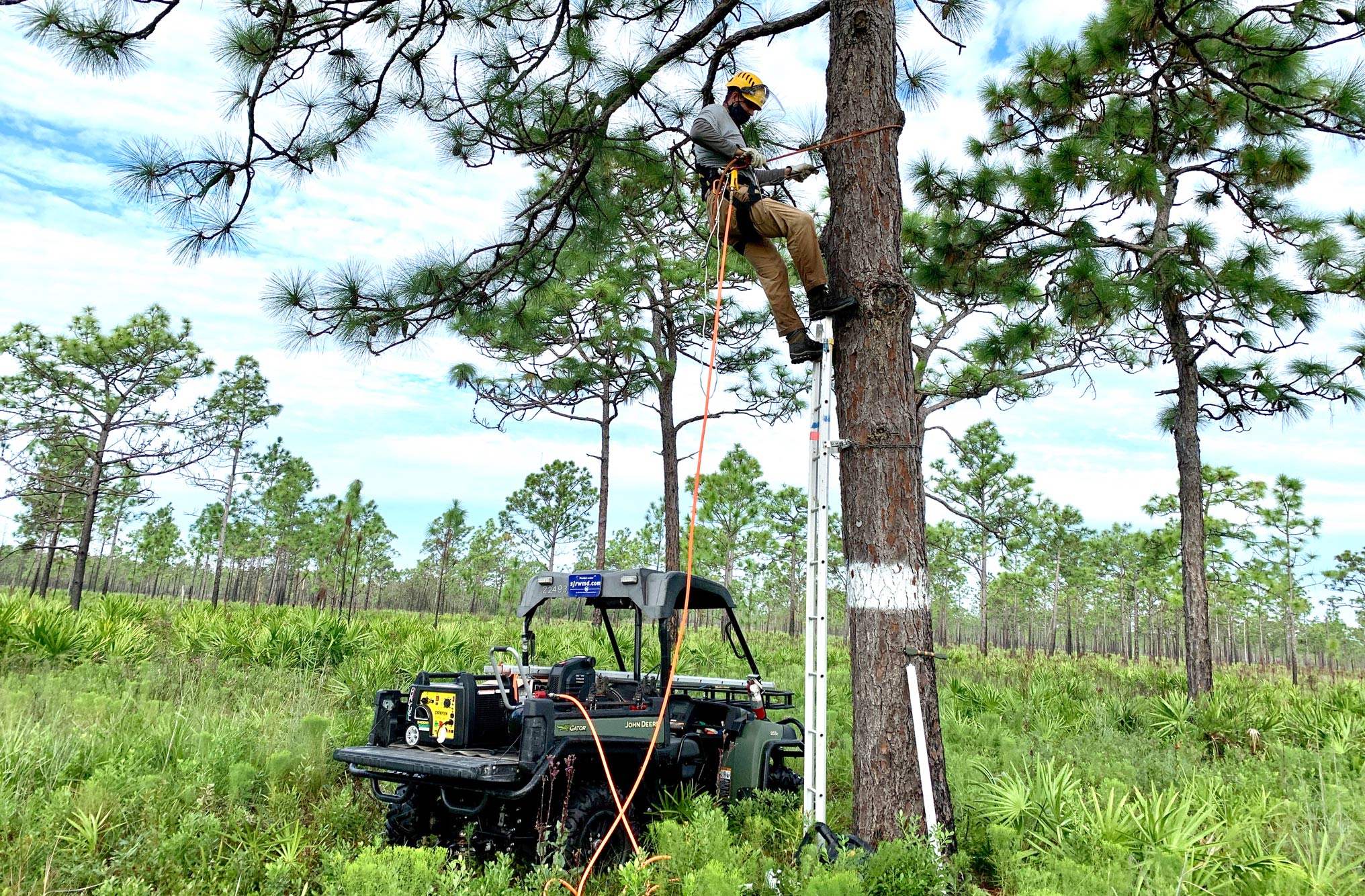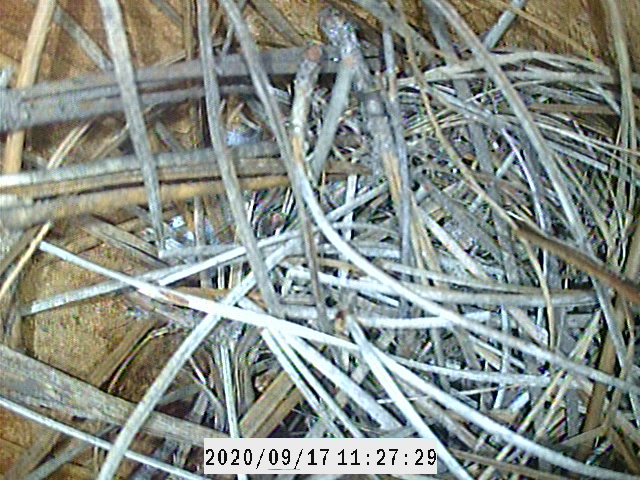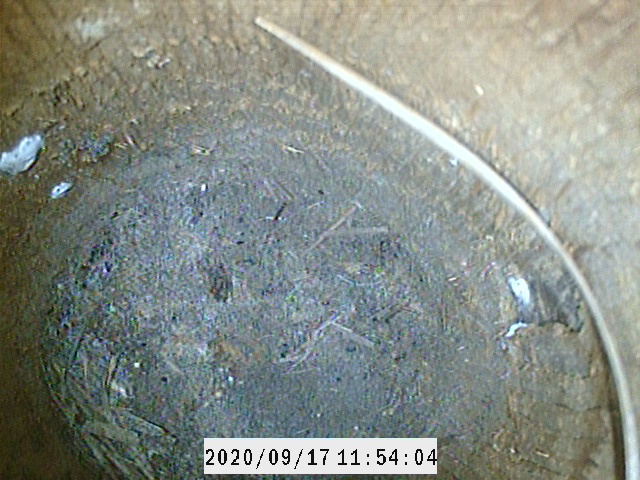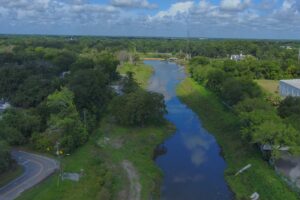It’s fall house cleaning
time for woodpecker cavities
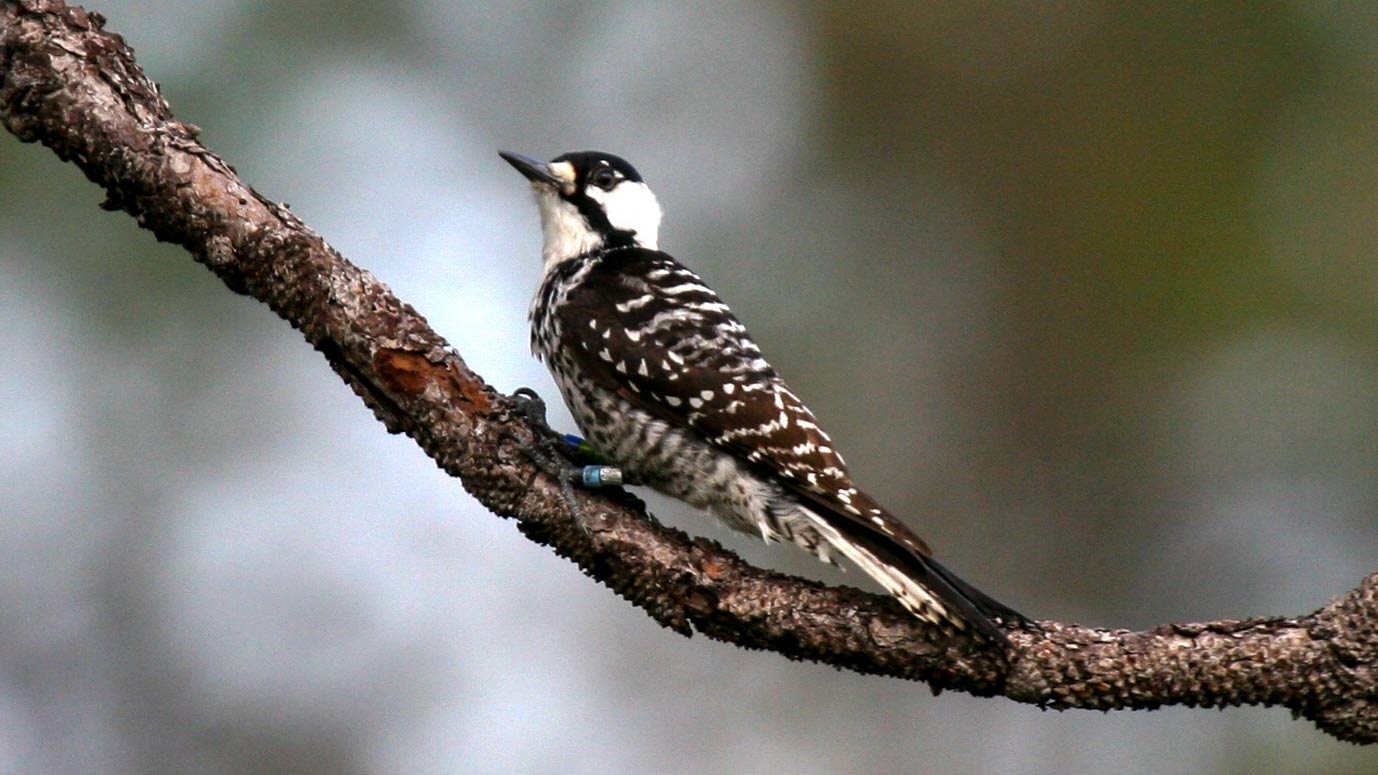
A red-cockaded woodpecker.
You’ve no doubt heard of spring cleaning. For St. Johns River Water Management District land managers caring for red-cockaded woodpeckers at Hal Scott Regional Preserve and Park in Orange County, it’s all about fall house cleaning.
Armed with their trusty auto parts grabbers, shop vacs and air compressors, District land managers recently wrapped up their annual maintenance of red-cockaded woodpecker cavities, the holes in trees where these birds make their homes.
The District’s primary goal in purchasing and managing land, such as the Hal Scott Preserve and Park, is to protect water resources. While doing this, we actively manage the properties to protect native plants and animals. At Hal Scott, our land managers have worked with the U.S. Fish and Wildlife Service to manage the federally protected and endangered birds for nearly 20 years.
“We clean tree cavities that have been used by other animals over the summer,” explains District Land Manager Maria Zondervan. “We make the cavities available for juvenile woodpeckers that have fledged from their parent’s cavities and are now looking for a place to live. These endangered birds have limited cavities, so one of the best ways to protect them is by helping provide them with suitable places to live.”
Many other birds — bluebirds, for example — only use cavities during nesting season and then abandon them, Zondervan adds.
“However, they leave them full of nesting material which scares juvenile woodpeckers away from using them,” she says. “We often find flying squirrels and snakes in the cavities. Snakes don’t generally bring in materials, but squirrels can leave behind a huge mess of moss and cored pinecones. Sometimes we find mud dabbers, bat guano, pine needles and leaves.”
Earlier this year, land managers reported that 2020 has been a banner year for red- cockaded woodpeckers nesting at Hal Scott. All woodpecker families were nesting (which isn’t usually the case) and Zondervan witnessed her first three-hatchling nest in the 20 years she has been helping manage the property.
Learn more about our efforts to manage these endangered birds here.
Other creatures use tree cavities at different times of year and leave debris that land managers remove.


